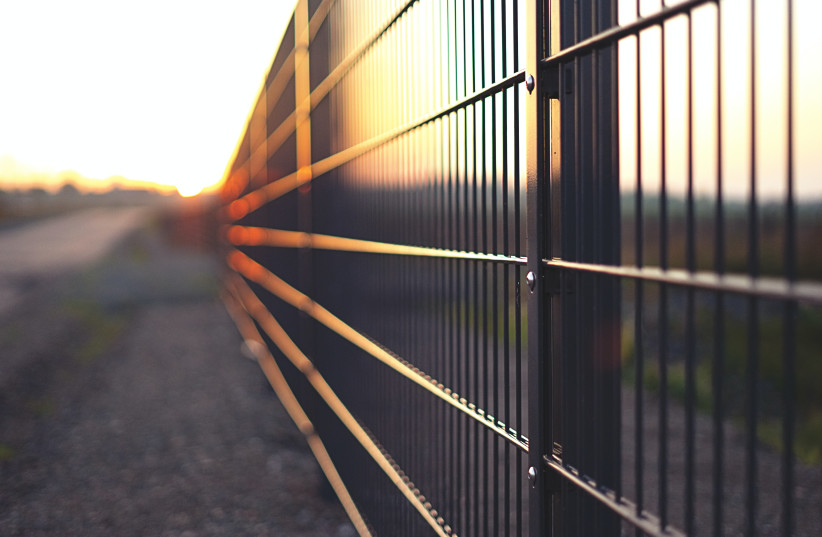In our efforts to preserve life, we adopt every possible measure to prevent senseless or accidental death. For this reason, the Torah obligates us to construct fences upon the flat roofs of our homes so that “you should not situate blood in your homes.”
Surprisingly, the instruction to maintain safe home environments is juxtaposed to a seemingly unrelated prohibition of mixing seeds and grapes, mandating that these dissimilar species be planted at a distance from each other. The instruction to erect a fence upon a flat roof and the violation of mixing different agricultural groups appear to share little in common.
The price of progress
The commandment to construct a fence on a roof has broader metaphoric implications. Fences are only necessary in multi-storied homes. When humans lived in modest, single-story thatch huts, fences weren’t necessary. Rickety roofs couldn’t support human weight, and the heights of these homes weren’t substantial enough for a fall to be lethal. Fences on roofs only become necessary as humans acquired the skills to construct solid and tall edifices. The need for fences only emerged with the advance of technology.
Constructing taller buildings is crucial for human development. Living in straw huts or mud homes exposed humanity to the violent forces of nature. Additionally, in the absence of multi-storied structures, populations were scattered across broad regions. Acquiring the ability to manufacture bricks and mortar enabled the generation of the Tower of Babel to condense the population and to inaugurate the first recorded city, effectively eliminating the curse of Kayin to nomadically wander the Earth. Building tall structures with high roofs was a major milestone of architectural achievement.
But it also presented new perils. Solid roofs expanded human living space but also introduced the deadly hazard of falling off those roofs. By cautioning us to build a fence, the Torah signals a broader message: Pay attention, not just to the benefits of human innovation but also to the undisclosed dangers which new technologies create. As the human spirit advances, we must not allow technology to endanger life or to harm human welfare.
The first revolutionary phase
We have all experienced a dizzying 300 years of industrial and technological revolutions, each of which has dramatically advanced the human condition. However, each revolution introduced new threats to human well-being.
The Industrial Revolution revolutionized human labor, relocating industry from the farmlands and local shops into massive factories. But it also stationed workers in cramped conditions with poor ventilation and toxic exposure to hazardous materials. These dark and inhuman caverns often callously exploited child and immigrant labor. Furthermore, industrialization polluted our environment and accelerated global warming, the effects of which we are first beginning to suffer.
The Industrial Revolution also created a demographic shift, rapidly accelerating urbanization and creating overcrowded concrete jungles of crime and urban blight.
For its part, the technological revolution and the Internet have radically diminished human interaction, creating more loneliness and less communal belonging. Every technology advances human progress but also introduces new and unspoken menaces to human welfare. By charging us to build fences upon our tall homes, the Torah is effectively cautioning us to be sensitive to the dangers which accompany new technologies.
Changing nature
The adjacent prohibition to the commandment to build walls bans the mixing of grains and grapes. Unlike the instruction to build a fence upon a roof, the Torah doesn’t rationalize this prohibition based on its potential negative impact. It states the prohibition without any explanation or reasoning. Evidently, mixing different agricultural species and manipulating nature is banned, even if they don’t harm the human condition. God fixed inviolate boundaries in nature which are not to be crossed, even in the pursuit of science and progress.
We are currently standing at an important threshold of human innovation and technology. We are not just developing the ability to build taller homes but are beginning to re-engineer nature itself. We have passed from the stage of building tall homes to the stage of mixing grains and grapes.
Past industrial or technological revolutions didn’t alter the basic chemistry of nature but merely harnessed its potential more efficiently. For example, successive revolutions in energy empowered us to draw more energy from our natural world. Initially, we sailed the oceans on wind-powered ships, aided by human muscle.
We soon discovered that heating water would release steam energy and that burning coal would release heat energy. Each of these discoveries allowed us to mechanize labor and production and to revolutionize travel. Ultimately, we discovered that natural gas and fossil fuels contained even greater energy capacity which could be released by controlled burning. At no point, though, did our manipulation of energy sources alter the basic configuration of nature.
All this changed, however, over the past century, as quantum physics and Einstein’s discoveries allowed us to peer into the sub-atomic level of our world. We soon discovered that by splitting atoms, we could unleash enough energy to destroy the world. We are now discovering that by fusing atoms, we can release even more energy. By splitting atoms and by combining atoms, we are re-engineering the basic model of nature.
Another example of technological advances changing the basic design of nature are the advances in the field of medicine. Over the past 500 years, the progress of Western medicine has dramatically improved human health and significantly expanded life expectancy. These inventions didn’t alter nature but equipped us with the skills and the tools to better understand human physiology and provide both preventional and interventional procedures. These revolutions didn’t mix grains and grapes but merely built taller homes.
Medical science is now entering a bold new era. Having mapped the human genome, we can re-engineer human DNA and, potentially, alter human identity. We can clone new life, and we can manufacture 3D-artificial limbs and organs. Artificial intelligence will, ultimately, enable the creation of enhanced human beings by fusing technology with human biology. We are toying with the building blocks of the world God created. This is a very different type of technology and poses a very different religious question.
AS WITH everything else, the Torah provides direction. Technology itself should never be vilified. For a religious Jew, the march of science and progress is driven by a religious impulse. God is kind and compassionate, and desires that we improve our condition and welfare. Greek mythology depicted Prometheus stealing fire from the gods and being eternally punished for his crime. By stark contrast, the Gemara describes God delivering fire to Adam immediately after the first week of creation. This passing of fire from God to Man, is effectively a passing of the baton. God signaled that His creation was completed and that now, He expected humanity to improve the world He intentionally left imperfect.
Yet there are limits to human creativity. There are basic boundaries of nature we aren’t meant to encroach upon. Or, as God instructed Adam, it is his world “to develop but also to preserve.” We must develop but must also preserve. Balancing the two divine mandates will never be easy.
We do not possess any clear tradition about larger issues such as global warming, genetic engineering, or quantum physics. The best we can do is to maintain a delicate balance. In our pursuit of science and innovation, we must respect the boundaries God installed in nature. When we sense that we are crossing those boundaries, we must pause and consider whether we are developing God’s world as He desires or are mixing grapes and grains. ■
The writer is a rabbi at Yeshivat Har Etzion/Gush, a hesder yeshiva. He has smicha and a BA in computer science from Yeshiva University, as well as a master’s degree in English literature from the City University of New York.




